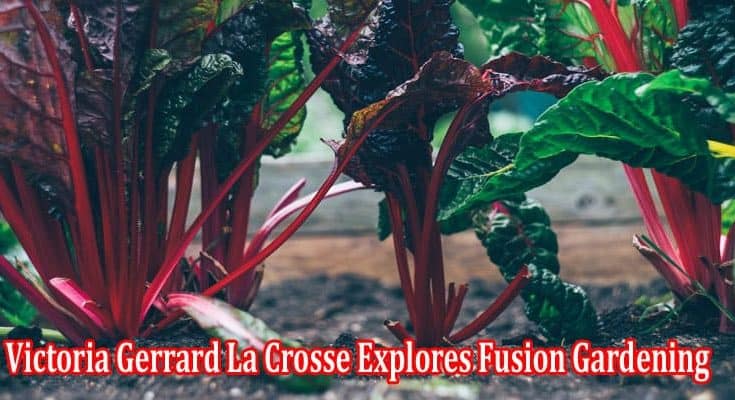Gardening is more than just a pastime for many people. It is a way of life, connecting with nature and creating beautiful spaces in perfect harmony with the environment. However, conventional gardening practices can harm the environment, including using chemicals to the overconsumption of water. That’s where fusion gardening comes in, which combines the best of traditional gardening with modern eco-friendly elements to create sustainable outdoor spaces. In this blog post, expert Victoria Gerrard La Crosse explores the concept of fusion gardening and how to incorporate it into your outdoor spaces.
Understanding Fusion Gardening
Victoria Gerrard La Crosse WI says that fusion gardening is a trend gaining popularity over the years as we continue to face more environmental challenges. It involves blending traditional gardening elements with modern sustainable practices designed to minimize environmental impact. According to Victoria Gerrard La Crosse, it means embracing techniques such as companion planting, crop rotation, organic pest control, and even reducing lawn areas in favor of more natural and eco-friendly features like vegetable gardens and native plants. Fusion gardening focuses on creating a beautiful and functional garden while considering the impact of each element on the environment.
Benefits Of Fusion Gardening
One of the primary benefits of fusion gardening is its sustainability. It promotes conserving water, reducing chemical use, supporting beneficial wildlife, and fostering healthier soil through composting and natural fertilizers. This approach ensures that your garden is visually appealing and beneficial for the environment. Additionally, fusion gardening provides a great opportunity to grow your food, which helps to reduce the carbon footprint associated with the transportation of food. Moreover, merging traditional garden design with modern eco-friendly elements creates a garden that is easier to maintain, and you don’t have to spend as much time and money on upkeep.
Creating A Fusion Garden
To get started on your fusion garden, consider incorporating different sustainable practices that align with your design aesthetic. Start by assessing your outdoor space and identify what elements can be modified or added. For instance, you could create an outdoor compost bin, invest in rain barrels to harvest rainwater, or select plants suited for the local climate that require less water or maintenance. You could also create a garden path using porous materials that allow excess water to seep into the soil instead of draining into the streets.
Tips For An Ideal Fusion Garden
Creating a fusion garden is not as complicated as it sounds. Here are some tips for designing an ideal fusion garden:
– Incorporate edible plants into your garden to encourage eating locally-grown produce.
– Consider adding pollinator-friendly plants to attract bees and other critters that help flowers and fruits grow.
– Integrate hardscapes into your garden design, such as pathways, seating areas, and water features, that can help conserve water and reduce the amount of upkeep.
Selecting Sustainable Materials
Choosing sustainable, renewable, and eco-friendly materials is essential when creating a fusion garden. For instance, use reclaimed materials for garden paths, such as bricks or stone pavers, and repurpose old furniture or garden ornaments to reduce waste. You could also opt for sustainably sourced products like bamboo or cedar for garden beds or outdoor structures to lower your carbon footprint. Additionally, use graphite-coated clay pellets or mulch to retain moisture and make the plants less reliant on water, reducing water consumption. Here are some other ideas worth considering:
– Rainwater collection system: This system collects rainwater and stores it in a barrel, which can then be used as an irrigation system.
– Drip irrigation systems: Rather than using traditional sprinklers, a drip irrigation system gradually drips water directly to the plant’s roots, boosting water efficiency.
– Solar-powered lighting: Using solar-powered lights is a great way to save energy, reduce electricity bills, and enhance the outdoor ambiance.
– Composting: This process involves converting organic waste into nutrient-rich soil, reducing the need for chemical fertilizers while boosting soil quality.
Embracing Biodiversity
Finally, embracing biodiversity is an essential aspect of fusion gardening. Encourage birds, bees, and other beneficial insects in your garden by incorporating different habitats, such as a bee hotel, birdhouses, and butterfly gardens. Limit pesticide sprays and avoid over-fertilizing, weighing down the soil, and limiting diversity. Choose plants that are native to your area, which help to attract beneficial wildlife and are more resistant to local pests.
Conclusion
Fusion gardening is a concept that encourages homeowners to blend traditional gardening with modern eco-friendly elements. It promotes sustainable gardening practices such as conserving water, reducing chemical use, fostering healthy soil, and fostering biodiversity in the garden. By creating a fusion garden, you can create a unique outdoor space that is both aesthetic and functional while minimizing your environmental impact. Consider using sustainable materials, embracing biodiversity, and selecting practices that align with your design aesthetic. With these fusion gardening tips from Victoria Gerrard La Crosse, WI, you can create a garden that is beautiful and kind to the environment.

Caroline is a dedicated writer with a passion for keeping readers informed. Specializing in providing the latest news updates and unbiased reviews, she strives to deliver accurate and insightful content. With a keen eye for detail and a commitment to journalistic integrity, Caroline ensures that her readers are always well-informed. Stay tuned for her latest articles to stay up-to-date on current events and trends.



